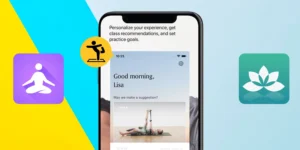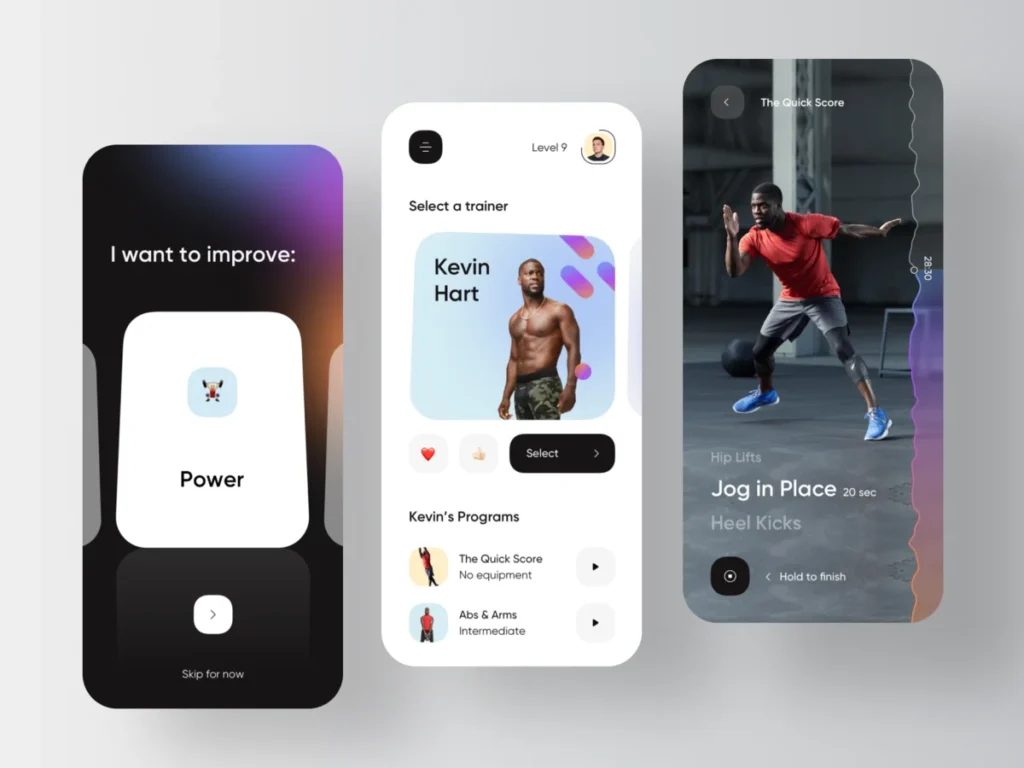The global digital wellness industry has reached a new milestone as mobile yoga applications exceeded 500 million downloads worldwide by the end of 2024, according to industry analytics firms. This rapid growth underscores a transformative shift in how people approach health, fitness, and mental well-being—marking a significant evolution in the global yoga movement.
The spike in app downloads spans across continents, driven by growing health awareness, increased smartphone penetration, and the widespread embrace of remote wellness solutions. From beginners seeking guided sessions to seasoned yogis looking for personalized routines, users are increasingly turning to digital platforms for convenience, affordability, and consistency in their wellness journeys.
From Studio Mats to Smartphone Screens
Over the past decade, yoga has undergone a digital metamorphosis. While traditional in-person classes remain valuable, mobile apps have emerged as the dominant access point for millions seeking flexibility and affordability in their wellness routines.
Yoga apps like Daily Yoga, Glo, Down Dog, Yoga for Beginners, Alo Moves, and Asana Rebel have collectively shaped a booming mobile ecosystem. Many of these platforms offer customizable plans, AI-driven feedback, virtual coaching, and integration with wearables—making yoga more accessible than ever.
The convenience factor plays a pivotal role. Users can now practice at their own pace, at any location, and on their own schedule. Whether at home, in a hotel room, or even during work breaks, yoga sessions can be launched instantly through smartphones and tablets.

Pandemic Sparked a Lasting Digital Wellness Trend
Much of this exponential growth began during the COVID-19 pandemic, which forced the closure of gyms, studios, and wellness centers. During lockdowns, millions of people downloaded yoga apps in a bid to stay physically active and mentally balanced.
Though restrictions have eased, the trend hasn’t reversed. On the contrary, many users have continued using mobile yoga apps as their primary method of practice, thanks to their on-demand nature and expanding feature sets.
According to data from Sensor Tower and App Annie, the number of active monthly users on top yoga platforms has increased by over 60% from 2020 to 2024, with many returning customers citing convenience and cost-effectiveness as primary reasons for continued use.
AI, Personalization, and Wearables Transform Experience
What sets the new generation of yoga apps apart is their use of emerging technologies. Artificial intelligence now plays a crucial role in tailoring sessions to individual needs. Many platforms feature interactive pose correction, real-time voice guidance, progress tracking, and mood-based recommendations.
For example, some apps ask users about their daily energy levels or emotional state and generate dynamic yoga routines accordingly—blending mindfulness with physical activity in highly customized formats.
Integration with wearables like smartwatches and fitness bands also enables real-time tracking of heart rate, breathing patterns, and calorie burn, helping users monitor progress and optimize performance.
Apps like Fitbit Premium, Apple Fitness+, and Samsung Health now include yoga-focused content in their wellness suites, offering seamless multi-device experiences that appeal to tech-savvy audiences.
Diverse Demographics Driving Demand
One of the most striking aspects of this surge is the diversity of its user base. While women aged 25 to 45 remain a core demographic, there’s been substantial growth in other groups—including teenagers, senior citizens, and men—who are increasingly engaging with yoga apps for different reasons.
-
Teenagers: Motivated by stress reduction and flexibility training, many teens use yoga apps to build emotional resilience and reduce anxiety. Some platforms offer school-specific content aimed at helping students balance screen time with movement and mindfulness.
-
Older adults: Many apps now include low-impact sequences designed for joint health, mobility, and relaxation—making them suitable for users aged 60 and above.
-
Men’s wellness: Several yoga platforms have launched male-focused programs that combine strength, mobility, and breathwork to cater to traditionally underserved segments.
The multilingual support in apps has also boosted uptake in non-English-speaking regions. Major apps now support Hindi, Spanish, French, Arabic, Mandarin, and Swahili—broadening their appeal across Asia, Africa, and Latin America.
Corporate Wellness and Institutional Partnerships
Yoga apps have increasingly become tools in corporate wellness programs and institutional wellness initiatives. Many companies now offer employees premium app subscriptions as part of their mental health and work-life balance strategies.
In the United States, United Kingdom, and parts of Asia, universities and healthcare institutions have begun recommending mobile yoga platforms as adjunctive tools for managing stress, improving sleep, and even supporting recovery in clinical contexts such as PTSD, anxiety, and chronic pain.
The Business of Digital Yoga
The financial impact of this trend is significant. The global market for yoga apps is projected to exceed $12 billion by 2026, with subscription-based revenue models leading the way. Many top-tier platforms offer monthly or annual premium tiers with expanded content, live sessions, and exclusive features.
Advertising, affiliate partnerships with yoga apparel brands, in-app purchases, and virtual studio collaborations also generate significant revenue streams for app developers.
At the same time, free apps and freemium models continue to dominate emerging markets, where affordability and internet access remain key factors.
Privacy and Quality Concerns Surface
Despite its benefits, the mobile yoga boom isn’t without challenges. Concerns over data privacy, user safety, and content quality persist. Some experts warn that unsupervised practice—especially among beginners—may lead to injury if apps lack accurate pose demonstrations or correction cues.
To address this, several platforms are integrating licensed instructors, verified medical consultants, and physical therapists into their development and support teams. Some also provide in-app emergency alerts and warnings about contraindications for users with pre-existing health conditions.
Meanwhile, government regulators and health bodies in Europe and North America are exploring guidelines to ensure mobile wellness content meets minimum safety and efficacy standards.
Bridging the Gap Between Tradition and Technology
While some traditional yoga practitioners have expressed concern over the digitization of yoga, others argue that apps can serve as effective tools for introduction and practice—especially when rooted in authentic philosophy and structure.
A few Indian startups, such as SARVA, MyYogaTeacher, and YogiFi, combine traditional Indian yoga with modern tech features, helping bridge the gap between heritage and convenience.
Indian Prime Minister Narendra Modi, during the 2024 International Yoga Day address, applauded the role of technology in taking yoga to “every home and every hand” while emphasizing the need to maintain its spiritual and ethical foundation.
The Future of Digital Yoga Looks Expansive
Looking ahead, experts expect mobile yoga apps to become more immersive with the integration of virtual reality (VR) and augmented reality (AR) technologies. Prototypes are already in development that allow users to participate in virtual studio environments or receive 360-degree pose corrections using headsets and motion sensors.
With 5G expansion, better global connectivity, and increasing health awareness, mobile yoga platforms are poised to become a staple of everyday wellness. As digital natives grow into adulthood and wellness becomes a core part of lifestyle branding, the mobile yoga industry will likely continue to flourish.
Whether users seek calm in the chaos, physical rejuvenation, or digital community, the message is clear: yoga has gone digital, and the world is downloading wellness—one pose at a time.





